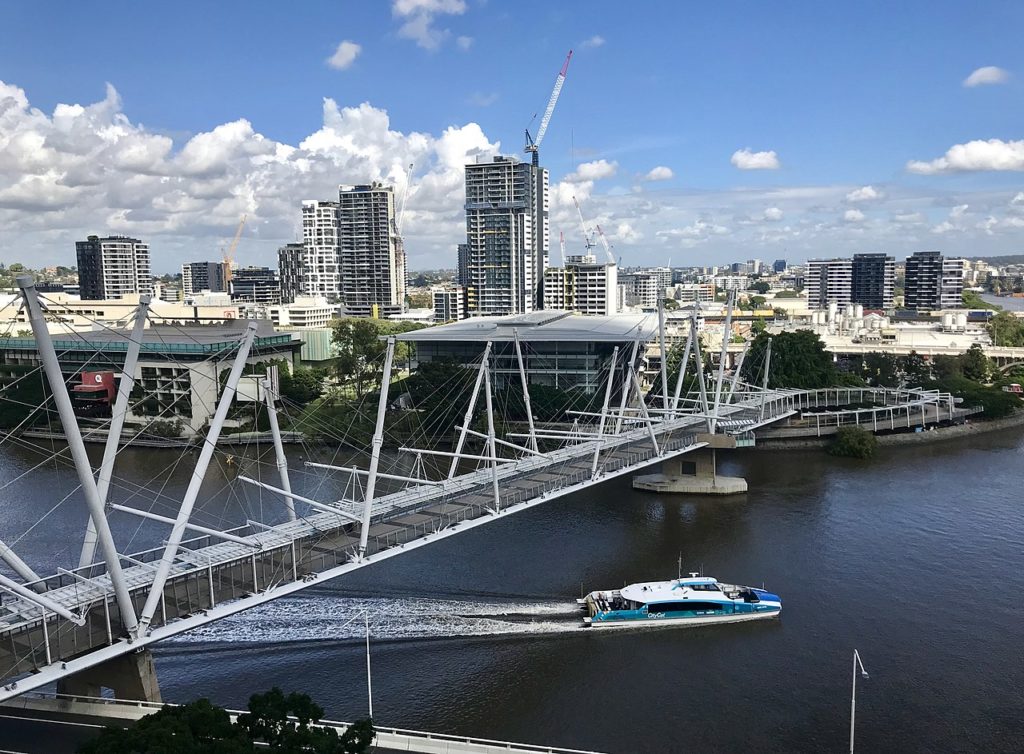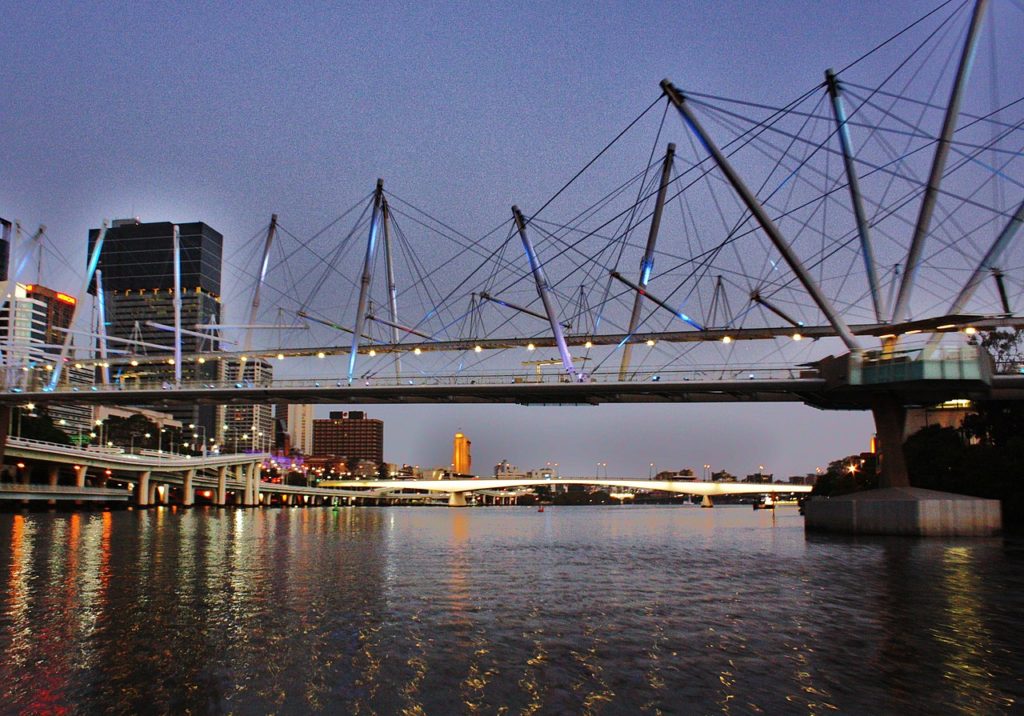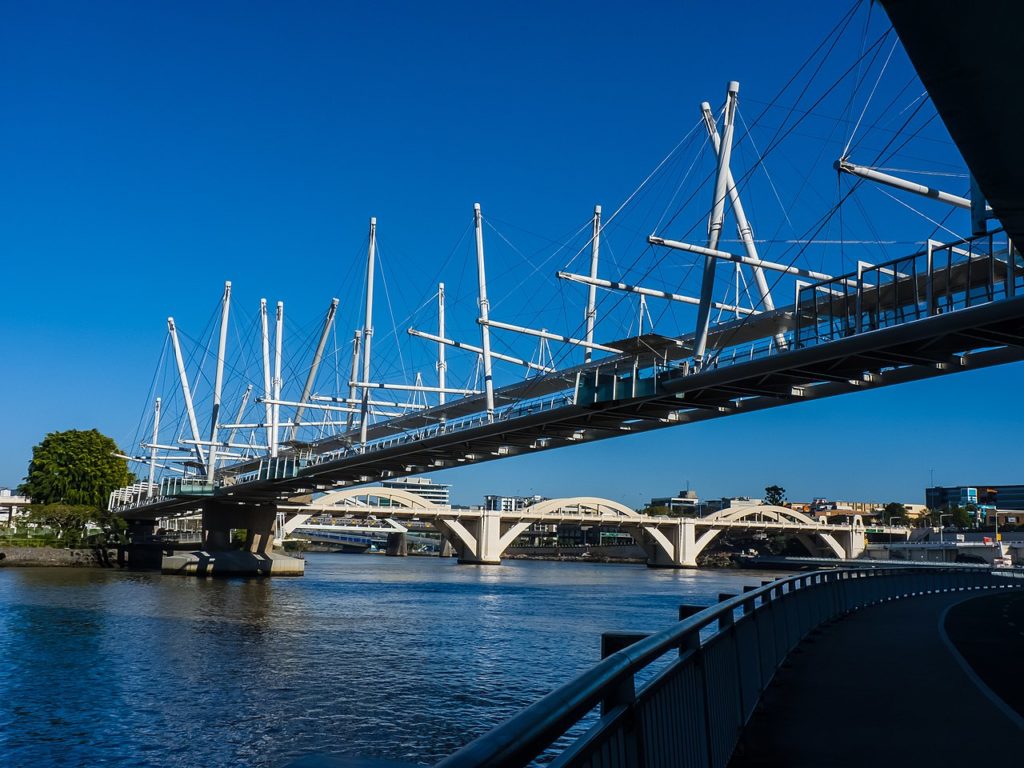The Kurilpa Bridge is a pedestrian and bicycle bridge over the Brisbane River in Brisbane, Queensland, Australia. It connects Kurilpa Point in South Brisbane to Tank Street in the Brisbane central business district. The bridge was designed by Cox Rayner Architects and Arup Engineers, and was completed in 2009.

The Kurilpa Bridge is the world’s largest hybrid tensegrity bridge. The Kurilpa Bridge is 470 meters long with a main span of 128 meters. It is 6.5 meters wide and has a clearance of 12 meters above the Brisbane River. Tensegrity, also known as tensional integrity, is a structural principle based on a system of isolated components under compression inside a network of continuous tension, and arranged in such a way that the compressed members (usually bars or struts) do not touch each other while the prestressed tensioned members (usually cables or tendons) delineate the system spatially.

The Kurilpa Bridge is a unique and striking structure, based on the principles of tensegrity. This means that the bridge is supported by a system of balanced tension and compression components, rather than traditional load-bearing beams. This results in a very lightweight and strong bridge, with a distinctive appearance.

The Kurilpa Bridge is also one of the first large-scale solar powered pedestrian bridges in the world. It has 84 photovoltaic panels that supply between 75% and 100% of the power required for lighting, with surplus electricity fed into the grid.

The Kurilpa Bridge has quickly become a popular landmark in Brisbane, and is used by thousands of people each day. It offers stunning views of the city skyline and the Brisbane River, and is a great place to walk, run, or cycle. It is also a popular spot for photographers and tourists.

According to the Internet















